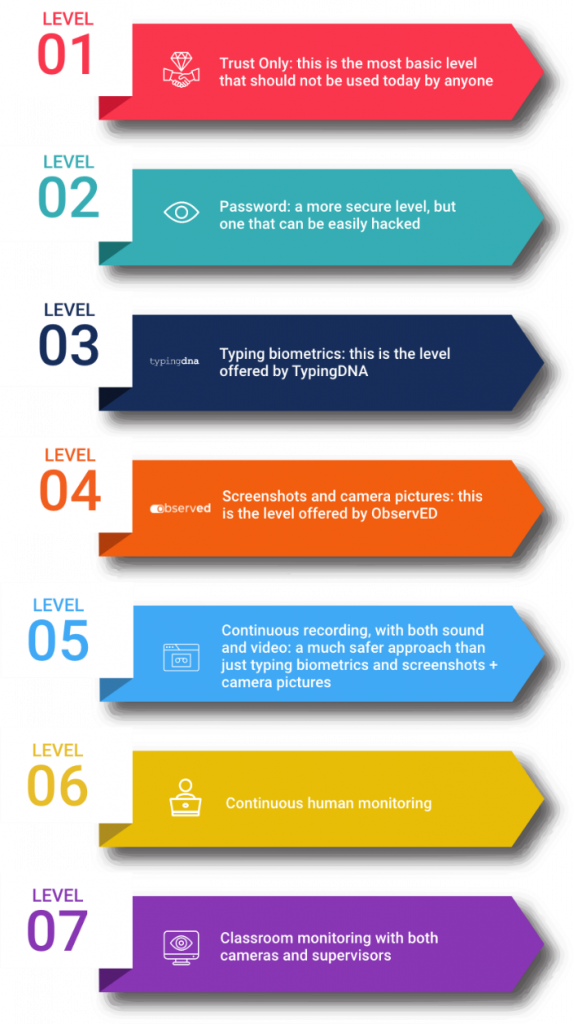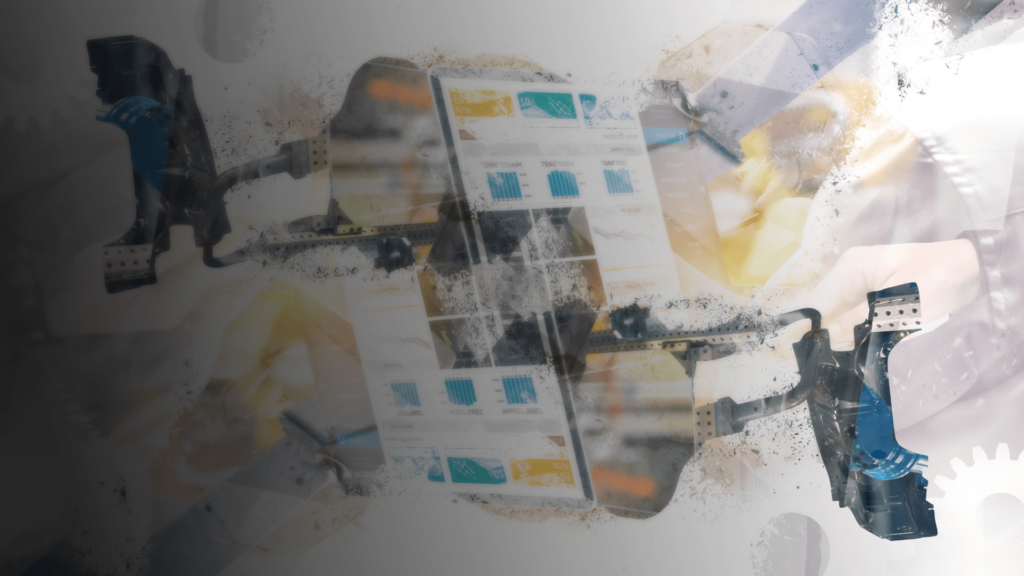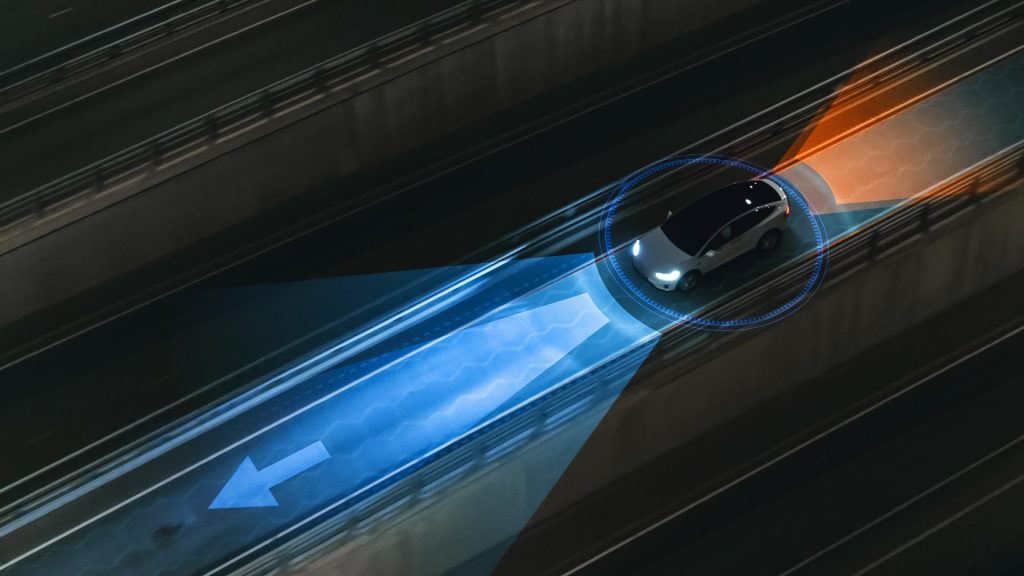Digital Transformation & Insights
There is no doubt that the advancements in technology and the rise of online education are changing the way students learn and how colleges hold exams. According to the Digital Learning Compass report, the number of students taking online classes grew from 4.6 million in 2008 to over 6 million by 2018.
In 2020, due to the global changes triggered by the coronavirus lockdown, we’ve seen that number surge to unprecedented figures. It is estimated that over 30 million students will learn online beginning in October 2020.
Of course, online learning also involves taking exams online. Digital examination procedures have undoubtedly become an integral part of modern students’ lives. The risks associated with online examinations are obviously related to cheating. Universities need to find a way to curb cheating and prevent students from earning unmerited marks. That’s where remote proctoring comes into play.
What is Remote Proctoring?
Remote proctoring is a modern term that describes all the operations the examiner should perform in order to ensure the integrity of an exam. In other words, proctoring includes certain procedures that monitor the student at all times. Proctoring is realized via various methods with the main goal to ensure the students do not cheat.
Online education, in particular, faces the challenge of conducting trustworthy assessments at a distance. The goal of such a system is to ensure that people taking tests are the ones they claim to be and that test-takers do not cheat during the exam.
How does Remote Proctoring Work?
Each and every remote proctoring system is unique, but the way they work is similar. A typical remote proctoring tool requires students to install the software on their computers. After they log into the system, they can begin the assessment. The student confirms his or her identity, either by holding up an ID to the camera or through other kinds of identity checks, such as biometric authentication or facial recognition.
Alternatively, students might be asked to type a short phrase so their keystrokes can be analyzed and compared to previous samples. That’s precisely how TypingDNA works, the main software used by Tremend’s own proctoring tool.
In some cases, a password that only the examiner knows is needed to begin the assessment, requiring him to take control of the student’s computer to enter the password. A lockdown mechanism may be used to prevent students from accessing web browsers or other applications.
Another technology that might be used during the testing is the camera, which can record the test and relay the video to a human proctor in real-time. This person can observe the student’s eye movements and other suspect behaviors in order to find signs of cheating.
Finally, the proctor would compile a report and outline all behaviors. Additionally, the proctoring tool might use a specific software capable of flagging student behavior that could indicate cheating.
Main Ways Students Cheat
According to a report from Stanford University, over 73% of students cheat on a regular basis. As technology keeps evolving, students’ modes of cheating have grown exponentially. Cheating becomes even simpler at home when no one oversees them.
Back in the old days, students would copy from neighbors, write answers on their arms, use cheat sheets or write the answers on the desk. Nowadays, they use invisible headsets, smart devices, or even tattoos with invisible ink.
At an online exam, students might try to tap notes near the webcam, use screenshots, switch browsers, ask a friend to take the exam in their place, or even hide tablets or smartphones close to their desks.
Why is Proctoring so Significant?
The most obvious answer is that proctoring deter students from cheating. The more advanced a proctoring system is, the harder it becomes for determined cheaters to beat the system. Advanced online proctoring systems are effective enough to serve as a deterrent to a considerable amount of misconduct.
In addition to verifying the identity of students who undergo the exams, universities can use a proctoring tool to safeguard their tests against cheating and ensure that all grades are given based on reality.
The Seven Proctoring Levels
When it comes to proctoring, the specialists from Tremend have discovered seven unique layers. While the first two levels are considered extremely insecure, the following levels are offering good protection against cheating.
The last two levels, namely six and seven, are not used anymore in 2020, due to the COVID-19 pandemic. This means that a modern proctoring tool should offer at least two or three levels of protection.
Tremend’s ObservED proctoring tool is a modern, affordable platform that offers examiners all the security benefits of Level 3 and Level 4 proctoring.
ObservED uses typing biometrics together with screenshots to offer a whole new level of security against cheating. Additionally, this multimodal platform comes with face recognition capabilities powered by Microsoft Cognitive Services and browsing recording features.

The Evolution Moves Forward
Because proctoring tools such as ObservED offer a better way to support academic integrity online, proctoring might become a staple of online courses.
Out of all proctoring trends, AI-powered proctoring is the most widespread. In addition to typing biometrics and other AI-powered technologies, we might soon see hardware such as smartwatches that can detect changes in body temperature or pulse. Additionally, the advancements in facial recognition will make it easy for robots to determine whether a student cheats by simply studying their facial grimaces.
For universities, the digital tools that support remote proctoring offer a reasonable level of security, while for students, they offer an opportunity to gain more self-confidence. We can only observe how the evolution of proctoring moves forward and the proctoring tools available on the market elevate learning and assessment programs.
To learn more about ObservED and how it protects universities against cheating, click here.


